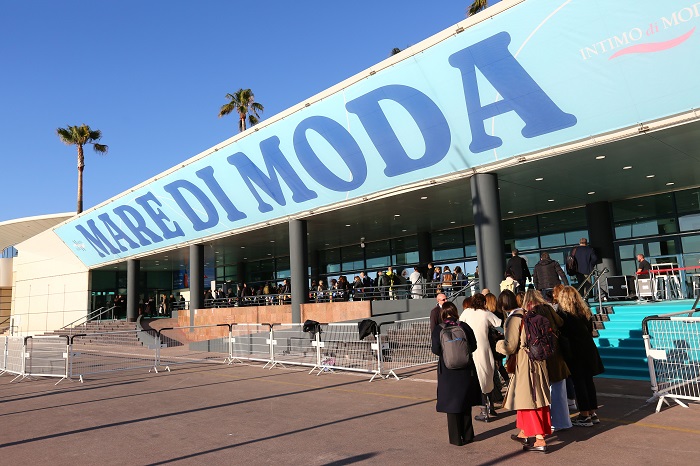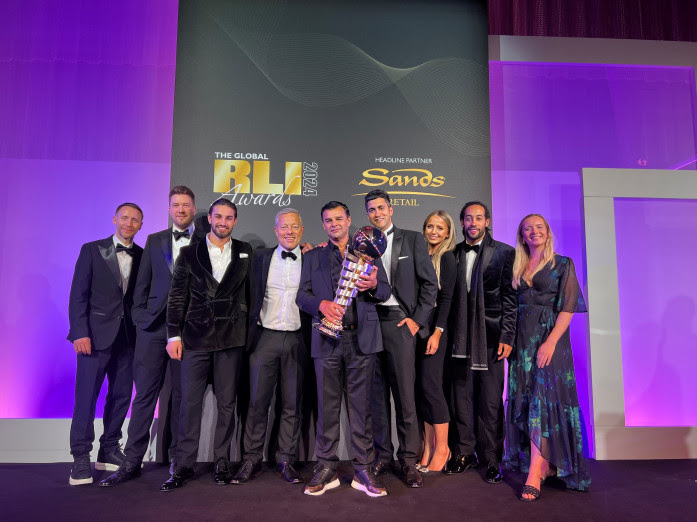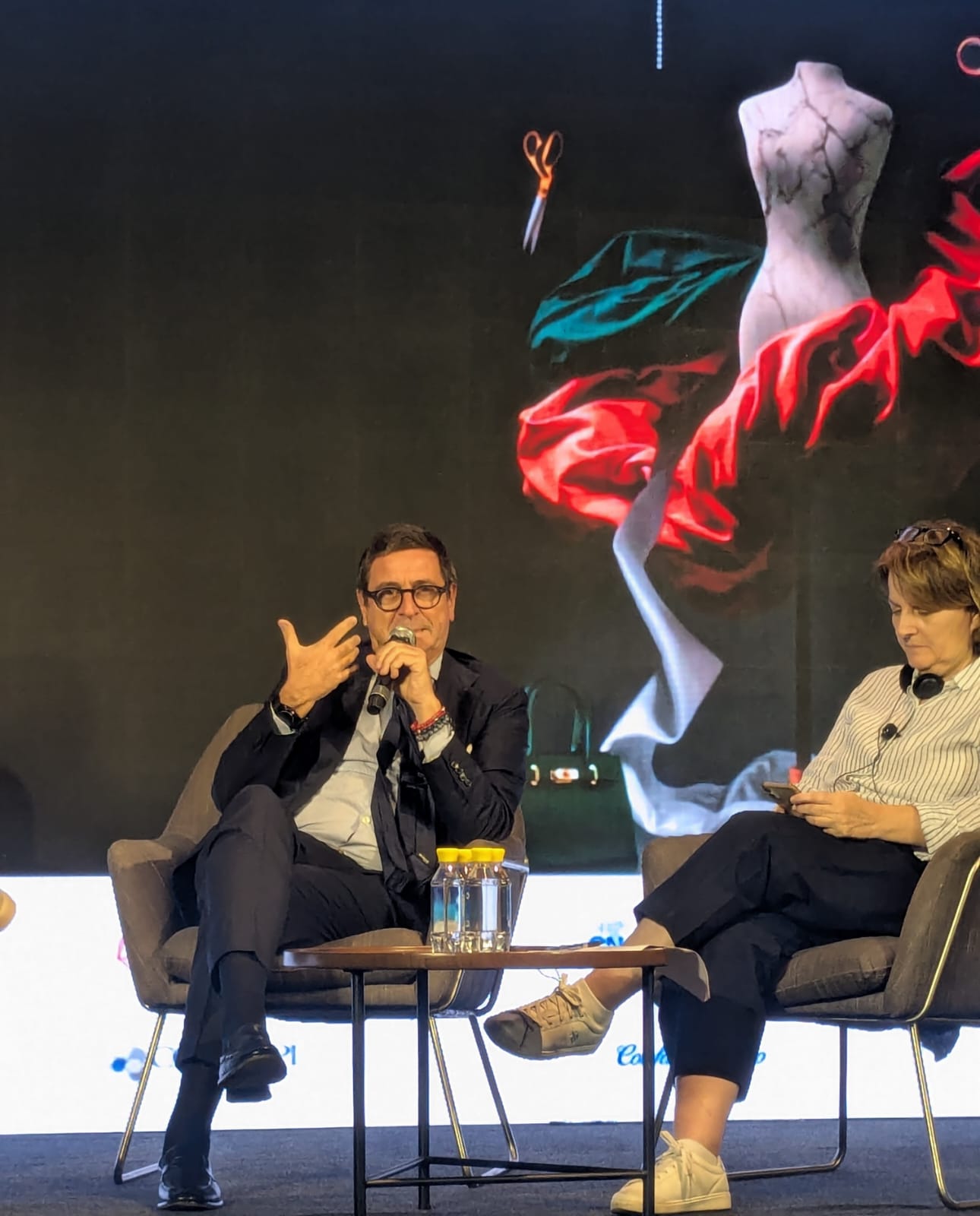FW
India needs $6.5 billion funds to reduce carbon emissions by 45 per cent in the textile and apparel sector by 2030, as per a recent report from the Apparel Impact Institute (Aii) and Development Finance International Inc (DFI).
As per the report, India currently has funds worth $2.5 billion. However, it still requires substantial financingworth $4 billion. Titled,‘Landscape and Opportunities to Finance the Decarbonisation of India’s Apparel Manufacturing Sector,’ the report has been developed in collaboration with HSBC.
India’s position as one of the world’s largest apparel producers makes it a key target for effective decarbonisation, aligning with global climate goals set by the Fashion Industry Charter for Climate Change, led by the United Nations. The charter aims to reduce absolute emissions by 50 per cent by 2030, requiring a combination of renewable energy and energy efficiency initiatives.
Outlining the available financial resources, the report reveals, India currently has $1.3 billion funds from credit lines and revolving funding schemes.It anticipates an additional $1.2 billion funds from International Financing Institutions, governments, and NGOs. It identifies six essential interventions to bridge the financing gap, emphasising urgent capital mobilisation and collaboration across the apparel value chain.
Emphasising on the report’s practical approach, Lewis Perkins, President, Aii, says, this report provides a clear path forward to close the climate finance gap and ensure decarbonisation solutions receive critical funding.
Noting the importance of decarbonising Indian apparel industry, Emilio Bunge, President and CEO, DFI, highlight its significance in the global supply chain and future competitiveness.
India’s established energy efficiency market positions it well for rapid decarbonisation. However, the report emphasises on the need for increased access to funding, particularly through blended finance models, to make these investments more feasible. Expanding accessible finance can help manufacturers tackle sustainability challenges, including risk constraints, financing difficulties, and infrastructure limitations.
The report urges policymakers, financiers, and industry stakeholders to take urgent action to boost India’s energy efficiency and renewable energy initiatives, emphasising the apparel sector’s essential role in achieving both national and global climate targets.
The current political unrest in Bangladesh has caused India’s garment exports to rise remarkably.Apparel exports from the country rose by 8.5 per cent in H1,FY25as against the 15 per cent decline during the same period last year. September was particularly robust, with apparel exports increasing by17.3 per cent Y-o-Y during the month.
Confirming the positive impact of the situation in Bangladesh on India’s garment exports, Sabu Jacob, Managing Director, Kitex Garments, the situation has positively impacted financial growth for Kitex Garments with the company reporting its highest-ever turnover and profit in Q2 FY25. The company’snet profit nearly tripled to Rs 39.94 crore during the quarter compared to Rs 13.21 crore in the same period last year.
Another Bengaluru-based exporter, Gokaldas Exportsalso identified the instability in Bangladesh as a long-term growth opportunity for the company. Buyers seeking alternatives outside China are increasingly turning to Asian suppliers like India with Bangladesh’s political issues, positioning the country as an attractive option, he noted.
Ajay Sahai, Director General and CEO, Federation of Indian Export Organisations (FIEO), confirms, to meet time-sensitive demand spurred by Bangladesh’s internal challenges, many global buyers are shifting orders to India.This shift is likely toresult in a sustained 10-20 per cent increase in annual apparel export orders for India, potentially adding $2-3 billion to the industry annually, benefiting established garment hubs across the country, he notes.
Ajay Srivastava, Founder, Global Trade Research Initiatives (GTRI), avers, international buyers may redirect 10 per cent -15 per cent of their orders from Bangladesh to India, potentially bringing an additional $300-400 million in monthly business to India. This shift positions India’s garment industry for sustained growth, as global demand increasingly pivots towards Indian manufacturers.
The upcoming Aquafina Vietnam International Fashion Week (AVIFW) Fall/Winter 2024 in HàNội will celebrate a decade of Vietnamese fashion evolution from Nov 13-16, 2024.
Apart of the 10th anniversary celebrations of Vietnam International Fashion Week (VIFW), this event will showcase sixteen international and Vietnamese designers, emphasising both creative progress and sustainable development in the Vietnamese fashion industry.
Highlighting the growth of Vietnam’s fashion sector, TrangLê, President, VIFW, notes, with Vietnamese designers gaining popularity at prestigious fashion events globally, the country’s fashion sector has expanded its influence in both domestic and international markets.
The upcoming AVIFW will open with the unveiling of a ready-to-wear collection by designer Do Manh Curong. Titled, Giọt Nước Thuần Khiết (Pure Water Drop), this collection is inspired by the powerful impact of water droplets and symbolises the resilience and energy of youth.
Other designers showcasing their collections at the AVIFW include designer Đức Hùng, who will present CóMột Mùa Đông Như Thế (There’s a Winter Like This), a collection merging Vietnamese cultural elements with quilting techniques to evoke intimacy and luxury.
Designer lineup at the event will also include international talents like Fredrick Lee from Singapore and Priyo Oktaviano from Indonesia, alongside Vietnamese designers Thuỷ Nguyễn and Adrian Anh Tuấn.
With the participation of prominent models, including Thanh Hằng and H'Hen Niê, the AVIFW Fall/Winter 2024 promises to be a vibrant event held at the Quần Ngựa Gymnasium in Ba Đình District, embodying the theme ‘Fashion Evolution; and paving the way for a sustainable and globally recognised Vietnamese fashion industry.
Christina Rapa has been elected President-Elect of the American Association of Textile Chemists and Colorists (AATCC), effective January 1, 2025. She will serve in this role until December 31, 2026. Rapa, an AATCC advocate for over 23 years, began her journey as a Textile Engineering student at Jefferson University and NC State. She has actively contributed to the organization, including the formation of the Northwest chapter and currently serving as the Delaware Valley Section Chair.
Rapa, who has chaired the Material Interest Group for the past three and a half years, has hosted webinars featuring topics such as ‘Space Textiles’ and ‘Biobased Leather.’ In her professional role at WL Gore and Associates, she focuses on digital transformation in fabrics, including 3D material creation and PLM software implementation.
Christina Rapa expressed that the AATCC Textile Discovery Summit is her favorite event of the year. She appreciates how AATCC facilitates connections with professionals across the textile, footwear, and apparel industries. Rapa is eager to build on this momentum in her upcoming role as President.
Upon Rapa's ascension, current President John Crocker will transition to Immediate Past President and Chair of the Appropriations Committee. During his tenure, Crocker fostered global engagement by encouraging participation in international tradeshows and represented AATCC at the 2024 Intexcon Conference in India. The AATCC thanks Crocker for his leadership and looks forward to Rapa's upcoming presidency. A special election for the next President-Elect is scheduled for early 2025.
The order index for Italian textile machinery experienced a significant drop of 19 per cent in Q3 2024 compared to the same period last year, according to ACIMIT, the Association of Italian Textile Machinery Manufacturers. The index value stood at 50.6 points (base 2021=100), primarily driven by a 23 per cent decline in foreign markets, which constitute 86 per cent of total orders. Conversely, Italy saw a 15 per cent increase in orders, with the domestic index reaching 61 points, while foreign markets registered 49.1 points.
Despite the rise in domestic orders, the overall situation remains concerning, particularly regarding foreign demand. Marco Salvade, President of ACIMIT, noted that investment in machinery is stagnating in key markets, including India, Turkey, and Bangladesh. The current order backlog stands at 3.8 months of guaranteed production.
To address these challenges, Italian manufacturers are actively exploring opportunities in regions where the textile industry is less technologically advanced. Salvade mentioned that ACIMIT has organized recent missions to Turkmenistan and Kyrgyzstan to evaluate local textile markets and identify technological needs. The efforts highlight the industry's commitment to expanding its footprint in emerging markets amid ongoing struggles in established ones.

MarediModa, the leading fair for beachwear, underwear, and athleisure sectors, will take place from November 5 to 7 at the Palais des Festivals in Cannes. This year’s event promises over one hundred collections of fabrics and accessories from Europe, alongside a variety of workshops, trend forecasting sessions, and exhibitions showcasing exclusive designs and contract manufacturing.
An unmissable opportunity
Claudio Taiana, President of MarediModa, emphasizes the fair's significance in today's uncertain textile landscape, noting that the event serves as a benchmark for excellence, creativity, and innovation. He highlights that, twenty-two years after its inaugural edition, MarediModa remains committed to fostering a collaborative environment where attendees can discover the finest European textile collections across diverse sectors. Taiana points out the industry's increasing focus on contamination and fluidity in fashion, urging designers to opt for fabrics that are not only technical and creative but also sustainably sourced.
David Shah will present the trend forecasting theme ‘Waterworld’ for summer 2026, featuring style directions through two sessions on November 5 and 6. His talks will delve into the depths of oceanic themes, exploring how water inspires beauty and creativity. Attendees will also gain exclusive access to the Trend Book 2026 and a presentation video, enriching their understanding of upcoming beach, intimate, and athleisure trends.
Spotlight on young designers
A standout feature of the fair is ‘The Link,’ which highlights collections from emerging talents at Europe's leading fashion schools. Young designers will showcase their innovative concepts in beachwear, underwear, and athleisure, culminating in a fashion show on November 6. Finalists include Matilde Balduzzi (Italy), Sebastian Cruciantu (Romania), and Moises Rivero Galvan (Spain) for beachwear; Beghim Genghiz (Romania), Marianna Luca (Italy), and Lucia Trabazos (Spain) for intimates; and Alessia Marenghi (Italy), Aurora Scorrano (Italy), and Nicolai Vulpe (Romania) for athleisure.
MarediModa continues to foster creativity with the Flash project, showcasing how fabrics transform into prototypes, while Seam highlights the craftsmanship of contract garment makers. The ATH Project will present athleisure garments designed by ISGMD, featuring innovative fabrics that anticipate future trends in sportswear.
The MarediModa Creative Excellence Awards 2024 will honor Melissa Odabash and Aguaclara for their contributions to the beachwear and underwear markets. Melissa Odabash, known for blending high fashion with swimwear, and Aguaclara, celebrated for its creative prints and sophisticated designs, represent the pinnacle of industry innovation and responsibility.
Sustainability focus
The Lycra Company will showcase its bio-derived LycraEco Madefiber at the event, emphasizing sustainability in beachwear and swimwear. Alistair Williamson will discuss this innovative fiber on November 5, highlighting its renewable content and performance benefits. Attendees can also experience a VR tour demonstrating the fiber's production process, reinforcing the industry's shift toward eco-friendly practices.
On November 6, Sensil will present its advanced fiber solutions designed for a sustainable future. This session will showcase how precision and expertise in fiber production elevate garments, ensuring they meet the demands of conscious consumers.
MarediModa promises an enriching experience, emphasizing creativity, innovation, and sustainability, essential for industry professionals navigating today’s textile landscape.

New Yorkers strolling along Fifth Avenue on Halloween morning were greeted by an unusual sight, a facade of massive, stackable Louis Vuitton trunks covering the flagship store at 1 East 57th Street. This unconventional display was set up to cover construction for a new Louis Vuitton flagship that will significantly expand the brand’s presence along the luxurious stretch of Billionaire’s Row.
The new building will nearly double the footprint of the previous store, signaling Louis Vuitton’s commitment to maintaining a prominent spot in one of the world’s most coveted retail locations. Designed by Louis Vuitton’s in-house team, the colossal trunk installation brings the brand’s iconic luxury trunks to an exaggerated scale, sparking intrigue among locals and tourists alike.
Provocative display draws social media attention
Louis Vuitton’s trunk facade has created a stir across social media platforms, with Reddit users debating the design’s architectural style. Some describe the installation as a whimsical ‘duck’, a structure that looks like what it sellswhile others see it as a straightforward decorated shed, designed to attract attention. Regardless of perspective, the installation has certainly captured public interest.
The concept is not entirely new. Last year, Louis Vuitton’s CEO Pietro Beccari introduced similar plans for a giant trunk display on the Champs-Elysees in Paris, making the NYC installation part of an ongoing branding strategy. The company has a history of using exaggerated versions of its trunks as eye-catching structures, dating back to a similar scheme in 2005.
Controversial past of trunk installations
Louis Vuitton’s attention-grabbing facade tactics haven’t been without controversy. The Champs-Elysees trunk, displayed in 2023, drew criticism from members of Paris’s Green party, who challenged its legality. They argued that the trunk installation violated French advertising regulations, which stipulate that advertisements on buildings cannot cover more than 50 percent of the facade area. The Louis Vuitton trunk facade covered over 50 percent, even extending to the roof.
Despite these concerns, the Paris city council ultimately sided with Louis Vuitton, determining that the oversized trunk was more an artistic installation than an advertisement, allowing it to remain.
Future plans for New York flagship unclear
LVMH Moet Hennessy Louis Vuitton, Louis Vuitton’s parent company, is spearheading the construction project on Fifth Avenue. This expansion mirrors LVMH’s recent investment in other luxury retail projects, such as the redesigned Tiffany & Co. flagship across the street, which was backed by the renowned architecture firm OMA.
A completion date for the new building at 1 East 57th Street has not yet been disclosed. However, the temporary trunk display will likely remain a prominent feature of New York’s luxury retail scene as Louis Vuitton prepares to unveil its upgraded flagship store.

US Polo Assn, a global brand synonymous with sporty elegance, has secured a prestigious win at the 2024 Global RLI Awards, held in London. Recognized for its remarkable growth in emerging markets, particularly India, the brand is poised to become a billion-dollar powerhouse in the world's second-most populous nation.
A winning strategy for the Indian market
This multifaceted approach has been key to US Polo Assn's success in India. With over 400 stores across 200 cities, and plans for further expansion, the brand has established a strong brick-and-mortar presence. Recognizing the growing importance of e-commerce, US Polo Assn. launched a dedicated website, USPoloAssn.in, catering specifically to Indian customers and simplifying online shopping.
To connect with Indian consumers on a deeper level, US Polo Assn. has partnered with prominent personalities like His Highness Maharaja Sawai Padmanabh Singh (Pacho) of Jaipur, fashion icon Palak Tiwari, and celebrity models Arjun Rampal and MilindSoman. These partnerships create a sense of cultural resonance and brand aspiration.
Global exposure with a local touch
US Polo Assn has leveraged its international presence to further its Indian success. With a landmark multi-year deal with ESPN and Star Sports, the brand brings the thrill of world-class polo championships directly to Indian audiences. This strategy not only reinforces the brand's connection to its sporting roots but also strengthens its appeal amongst sports enthusiasts in the country.
A celebration of global recognition
J Michael Prince, President & CEO of USPA Global, expressed pride in US Polo Assn's recognition as Emerging Market Retailer of the Year. He stated that winning this award and being a finalist for International Retailer of the Year highlights the global team's commitment to connecting with consumers and creating a significant market impact.
US Polo Assn.'s win at the RLI Awards is a testament to its successful adaptation to evolving markets. By staying true to its sporting heritage while embracing modern trends, the brand has carved a niche for itself in the hearts of Indian consumers. With its commitment to quality, style, and cultural connection, US Polo Assn is well on its way to achieving its billion-dollar milestone in India.
Making its debut at the exhibition, elastic manufacturing company, Rainbow Industries showcased an extensive collection of elastic products at GTE 2024 in Bengaluru.
Known for its specialisation in smoking elastics, Rainbow Industries caters to a variety of sectors, including footwear, gloves, and socks manufacturing. The company also showcased its Lycra elastic and fabric dory solutions, among other innovative products.
Emphasising on the company’s commitment to quality and environmental responsibility, Rajan Batra, Director, Rainbow Industries, says, its OEKO-TEX certification ensures its elastics adhere to stringent safety standards, providing manufacturers with a high-quality, eco-friendly choice.
This was Rainbow Industries’ first exhibition in South India, allowing the company to explore new markets and connect with potential customers. The unique smoking elastics attracted significant attention from attendees, highlighting the company’s distinctive offerings.
During discussions with a delegation from a textile management and engineering consulting firm, Gherzi, Kamran Arshad, Central Chairman, All Pakistan Textile Mills Association (APTMA), emphasised on the importance of a large-scale collaboration in fiber recycling and renewable energy to strengthen Pakistan’s textile exports, generate employment, and drive economic growth. A strategic partnership with Gherzi could help advance Pakistan's economic objectives, Arshad affirmed.
He highlighted, APTMA member mills have already made strides in sustainability by adhering to both international and local standards. Pakistan’s textile industry is planning to establish 1,000 garment factories with a $7 billion investment, aiming to increase exports to $50 billion, create 700,000 jobs, and generate an annual output of $20 million per plant.
Sharing insights on the anticipated slowdown in global garment production growth, Giuseppe Gherzi, Managing Partner, Gherzi advised industry leaders to remain agile and embrace emerging trends to maintain competitiveness. He outlined 34 transformative trends affecting the textile industry, emphasising, adaptation to these shifts is essential for companies aiming to stay competitive and sustainable.
Influenced by technological advancements, sustainability concerns, and evolving market demands, the textile sector would undergo considerable transformation by 2030, Gherzi projected. He noted, the rising significance of recycling will help brands connect with synthetic fiber producers, with several companies investing in innovative recycling technologies.
He also highlighted Galy Co, a biotech firm leading in sustainable cotton production, which recently raised $33 million in an oversubscribed Series B funding round. Galy’s method involves cultivating stem cells from cotton plant varieties in labs using bioreactors, eliminating traditional farming requirements.
Emphasising on need for brands to adapt to shifting market realities and innovate to foster growth, Gherzi noted, ultra-fast fashion is intensifying competition, requiring traditional fast-fashion leaders to innovate. Additionally, the global apparel resale market is rapidly expanding, with projections suggesting it could reach $350 billion by 2028.












